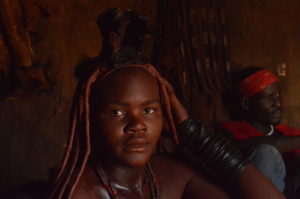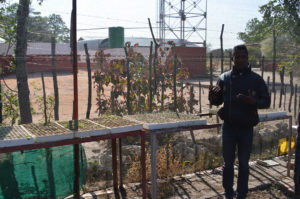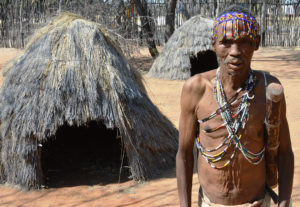During the past few weeks in Namibia my classmates and I have visited many unique and interesting places throughout the country. We have learned about the general culture of Namibia as well as diversity of specific cultures, agricultural practices of different people across the country, communal lifestyles, private land owner lifestyles and so much more.
In Namibia, the land is divided into private land, communal land and national parks. Unlike the United States, the land that some Namibian residents live on is not owned by them; rather, they claim communal land that is owned by the government. According to an article written by Windhoek author Ellanie Smit, approximately 17 million hectares of private land is owned by white Namibians who normally use it for commercial farming. However, many Namibian villages are starting to adopt a popular trend of using their private land, heritage and way of life to lure interested tourists. Two examples we have seen of this on the trip are the Himba and San villages we recently visited.
While visiting a Himba village, we were able to see how they are using their land and traditional lifestyle to bring in tourism. This particular village was given the land they live on by a private land owner after he fell in love with a Himba woman in the village. The Himbas in this village have chosen to continue their traditional lifestyle, wear traditional clothes and follow traditional roles set for Himba men, women and children. To generate an income these Himbas have decided to use the land they live on to lure curious tourists. While continuing their normal activities, the Himbas allow visitors to simply observe what they do on a daily basis, learn about their way of life and purchase crafts that the women and children in the village have made. Although the Himbas were previously known for being a communal group, the tourism brought to their village has caused them to transition more into individualists. The guides keep track of who is giving each tour to ensure they get paid the correct amount, and the women are very persistent when trying to encourage visitors to purchase the specific crafts they have made. Though the income may not be much, it is enough for them to purchase food and other necessities.
Another privately owned piece of land that we had the privilege of visiting belonged to the San people. Like the Himbas, the San welcome tourists willing to pay to see the village and learn about their way of life. However, how they live and the purposes they use the land for varies greatly from the Himba village. During our tour we were taken through the farm, which is used to grow crops to feed the residents of the village and the rest is sold to local consumers. We were also shown the school which many of the children from the villages close by attended during the week. The huts in which the village people live are traditional mud huts, but many of the village people have evolved to wearing modern clothing. The San people have put their land to great use with a farm, a school, a total of three villages and many other facilities for the residents of the land to use. By using the land for tourism as well, the San people are able to educate visitors about the history of their people and how they have adapted to modern day living, all while receiving extra income. Like the Himbas, the effects of tourism have caused the San people to adopt a more individualistic lifestyle. It was very interesting to see the combination of traditional and modern ways that these villages have grown accustomed to, and to see the effects that using private land for tourism has had on the people.


